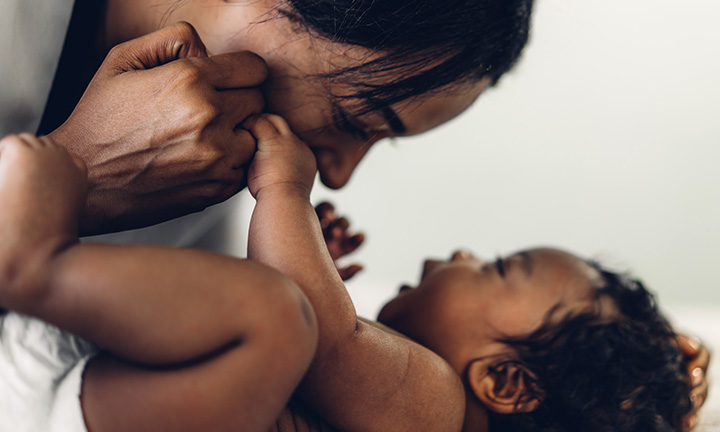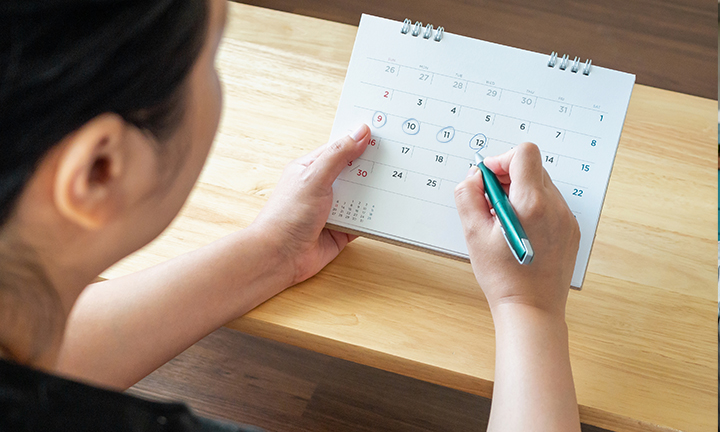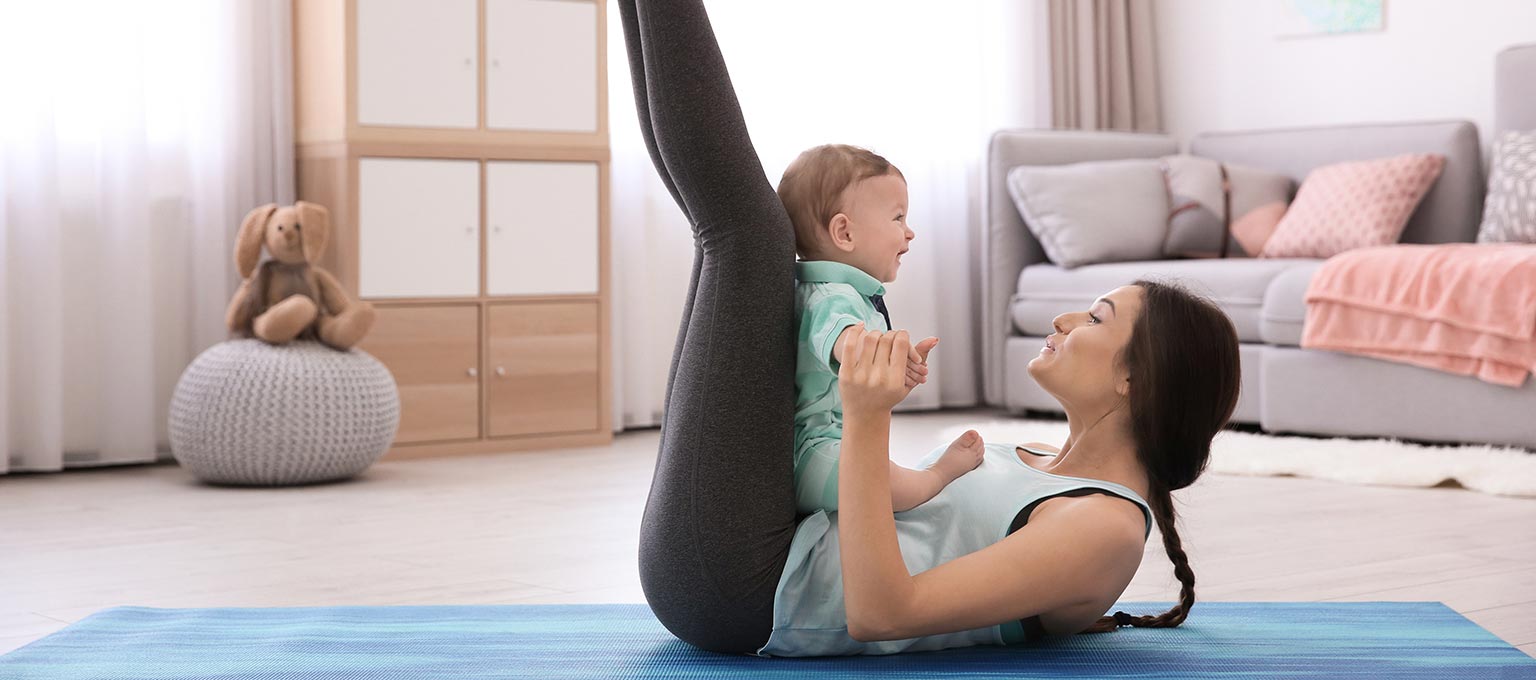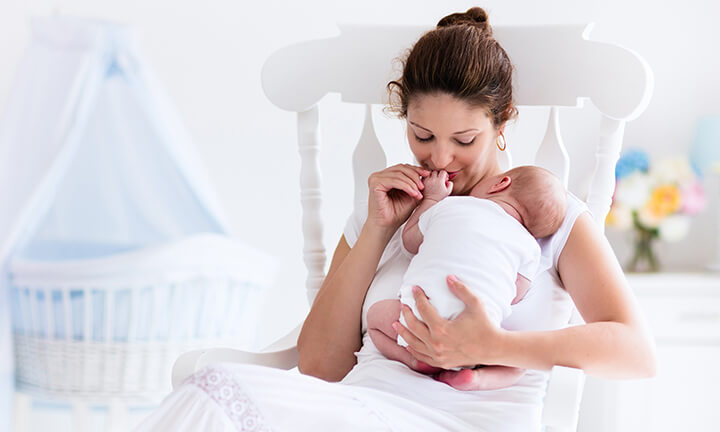
Postpartum Belly: Week-by-Week Changes and Recovery Tips
5 min readUpdated September 05, 2025

PhD, RN, FAAN
5 min readUpdated September 05, 2025

PhD, RN, FAAN
It’s completely normal to still have a postpartum belly weeks or even months after giving birth. Your body spent nearly 10 months growing and supporting a baby, and recovery takes time. Factors like a still-shrinking uterus, stretched abdominal muscles, loose skin, and a common condition called diastasis recti (a separation of abdominal muscles) all contribute to that lingering “baby bump.” Here's what you need to know:
Understanding the changes in your post-pregnancy belly helps you set realistic expectations and focus on healing. In the sections below, we’ll explore practical steps, safe exercises, and when to seek professional help.
How Your Postpartum Belly Might Look and Feel After Pregnancy
After childbirth, you may be surprised to find that your post-pregnancy belly doesn’t immediately revert to its pre-pregnancy state. This is completely expected. Initially, your stomach after pregnancy may appear softer and rounder—almost like early pregnancy—because of stretched muscles, loose skin, and residual fluids that supported your baby.
For many people, this means dealing with a saggy stomach post-pregnancy or excess skin from pregnancy. Factors like age, genetics, how much weight was gained, and how swiftly weight is lost affect how much postpartum loose skin remains. While exercise, hydration, and good nutrition can gradually improve skin elasticity, in some cases, it may not return entirely to its original appearance without medical treatments like skin tightening therapies or microneedling.
If you had a caesarean birth, you’ll also have an abdominal incision. Your provider will guide you on caring for the incision and scar, which supports healing and minimizes tension on the surrounding tummy area.
Some people experience diastasis recti, where abdominal muscles (rectus abdominis) separate during pregnancy and don’t fully realign afterward. If you’re diagnosed with diastasis recti, your provider may refer you to a physical therapist to help with targeted recovery and core restoration.
Feeling like you still look and feel pregnant? That’s normal. Every person’s post-pregnancy belly is unique. Be kind to yourself and patient—it takes time for the belly to return to its pre-pregnancy shape.
How Long Does It Take for the Uterus to Shrink After Pregnancy and Childbirth?
Postpartum, the uterus begins contracting in a process called involution—its gradual return to pre-pregnancy size. This process of the uterus shrinking after pregnancy typically takes about six weeks, regardless of whether you had a vaginal birth or a C-section.
Here’s what generally happens:
During involution, it’s common to experience postpartum belly cramps or “afterbirth pains,” especially during breastfeeding. These are signs the uterus is healing and contracting back to its normal size.
Post-Pregnancy Belly Week by Week
The journey of the postpartum belly week by week varies from person to person. While your uterus may shrink back to its pre-pregnancy size by around six weeks, it may take up to six months or longer for your body and belly muscles after pregnancy to fully recover. Here’s a general idea of the postpartum belly progression week by week:
First Two Weeks Postpartum
Your belly likely remains large and soft in the first couple of weeks after giving birth, so you may still look pregnant. However, this period sees the most rapid reduction as the uterus contracts and gradually returns to its pre-pregnancy size and weight. After one week, your uterus may weigh about half of what it did after delivery; by two weeks, it often reduces to around ten ounces. These changes reflect the early stages of the uterus shrinking after birth, week by week, typically shrinking about 1 cm per day in the first days after delivery.
3 Weeks Postpartum Belly
By around 3 weeks postpartum, your tummy may show noticeable change, but it will likely still be larger than before pregnancy. The abdominal muscles remain stretched, and skin may still appear loose, contributing to a softer belly. This is because recovery of belly muscles after pregnancy is gradual, and skin elasticity is still improving. Meanwhile, the uterus continues its involution, further shrinking week by week after giving birth.
6 Weeks Postpartum Belly
Reaching the six-week mark after giving birth is often considered a milestone in a parent’s postpartum recovery journey. At this point, the uterus has generally returned to its pre-pregnancy size; however, the appearance and feeling of your postpartum body and belly at six weeks can differ significantly among new parents.
The additional fluid retention and swelling that occurred during pregnancy and immediately postpartum have likely decreased, contributing to a reduction in your belly size. Your abdominal muscles may also start to regain more tone. However, for many, it’s common for muscles to still be pretty lax and weak, and the midsection might feel softer compared to pre-pregnancy.
Up to 1 Year Postpartum Stomach
A year into the postpartum period, you may notice a substantial difference in your body, including your stomach area, as you continue to recover from pregnancy and childbirth. Some people return to their pre-pregnancy weight, while others may find their body composition has permanently changed after giving birth.
With consistent exercise and a healthy, balanced diet, you may start to see improved muscle tone and skin elasticity in the abdominal area. However, it’s normal for the skin to retain some degree of looseness or for stretch marks to remain visible, as these are permanent changes for many.
The journey of regaining your pre-pregnancy body varies greatly from one parent to another, influenced by factors such as genetics, the nature of your delivery, diet, exercise, and overall lifestyle.
Tips and Ways to Lose Your Postpartum Belly
Physical recovery and returning to your pre-pregnancy fitness levels is a gradual process that requires patience and self-care. Combining exercise and healthy eating can help you gradually regain your energy and get your body back to where you want it to be. If you're looking for ways to lose your postpartum belly or wondering how to tighten belly skin after pregnancy, know that a consistent routine can make a meaningful difference over time.
While some people also focus on losing excess skin after pregnancy, results will vary depending on factors like skin elasticity, genetics, and overall health. Here are some tips to support your recovery and help restore your postpartum belly.
Postpartum Belly Exercises
Exercising is a great way to help lose your postpartum belly. Before starting any postpartum exercise regimen, it’s recommended to wait until your healthcare provider gives you the green light. Once you get the go-ahead, try to stay active for 20 to 30 minutes per day, but remember to listen to your body and be gentle and patient with yourself.
You can find more postpartum workouts in our dedicated article.
Postpartum Belly Nutrition
What you eat plays a key role in supporting healing and helping reduce a postpartum belly. Following a healthy, balanced diet can promote recovery, aid in weight loss, and even support your body’s efforts in losing excess skin after pregnancy.
Postpartum Belly Wrap and Band
Belly wraps or bands are traditional postpartum aids embraced by various cultures to support the abdomen and uterus, offering both physical support and aiding recovery after childbirth. These wraps provide gentle compression to assist in reducing swelling, support weakened abdominal muscles and the uterus as it returns to its pre-pregnancy size, and can help improve posture during the recovery process.
While they can be beneficial in the initial weeks postpartum by making it easier to move around and engage in daily activities, it’s essential to use them correctly—snug but not too tight—and to consult with your healthcare provider before use, especially after a cesarean section. Belly wraps should be seen as a temporary support measure, complemented by a healthy diet and exercise for effective long-term postpartum recovery.
FAQS AT A GLANCE
The uterus typically takes about six weeks to shrink back to its pre-pregnancy size through a process called involution. This process can vary slightly from person to person, with various factors, such as breastfeeding, affecting the timing.
The Bottom Line
The postpartum period is a time of significant physical and emotional adjustment. Understanding the changes your body undergoes and knowing that recovery takes time can help you set realistic expectations and be compassionate with yourself. Remember, everyone’s experience is unique, and embracing your body’s pace of recovery is a vital step toward wellness and strength.
If you haven’t already, download our Pampers Rewards app to get rewards and discounts on all those diapers your little one is going through.
- American College of Obstetricians and Gynecologists. Your Pregnancy and Childbirth: Month to Month, 7th ed. (Washington, DC: American College of Obstetricians and Gynecologists, 2021).
- Mayo Clinic. Guide to a Healthy Pregnancy, 2nd ed. (Rochester, MN: Mayo Clinic Press, 2018).
- Cleveland Clinic. “Diastasis Recti.”
- Cleveland Clinic. “Postpartum Belly Wrap.”
- Cleveland Clinic. “Uterus Involution.”
- March of Dimes. “Your Body After Baby: The First 6 Weeks.”
Read more about Baby
Related Articles
Join a World of Support
through Pregnancy and Parenthood.
TRACK WITH TOOLS
LEARN WITH EXPERTS
GET REWARDED











